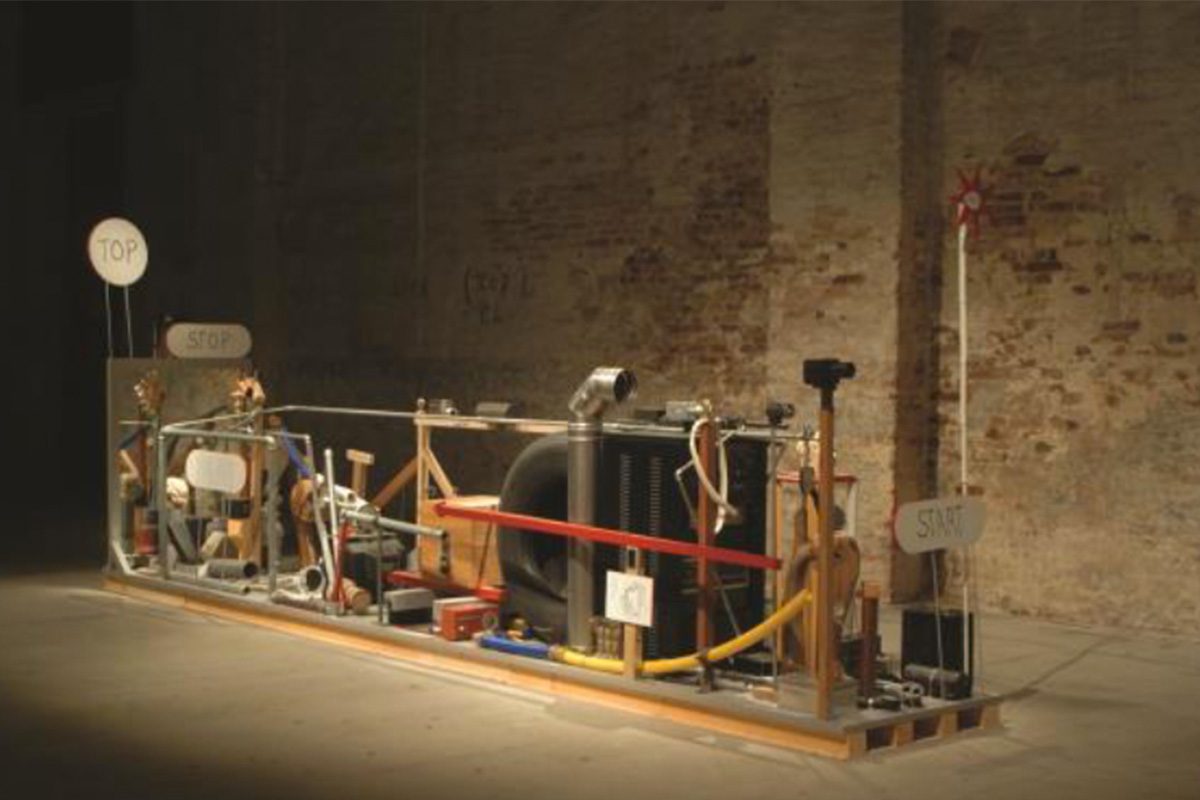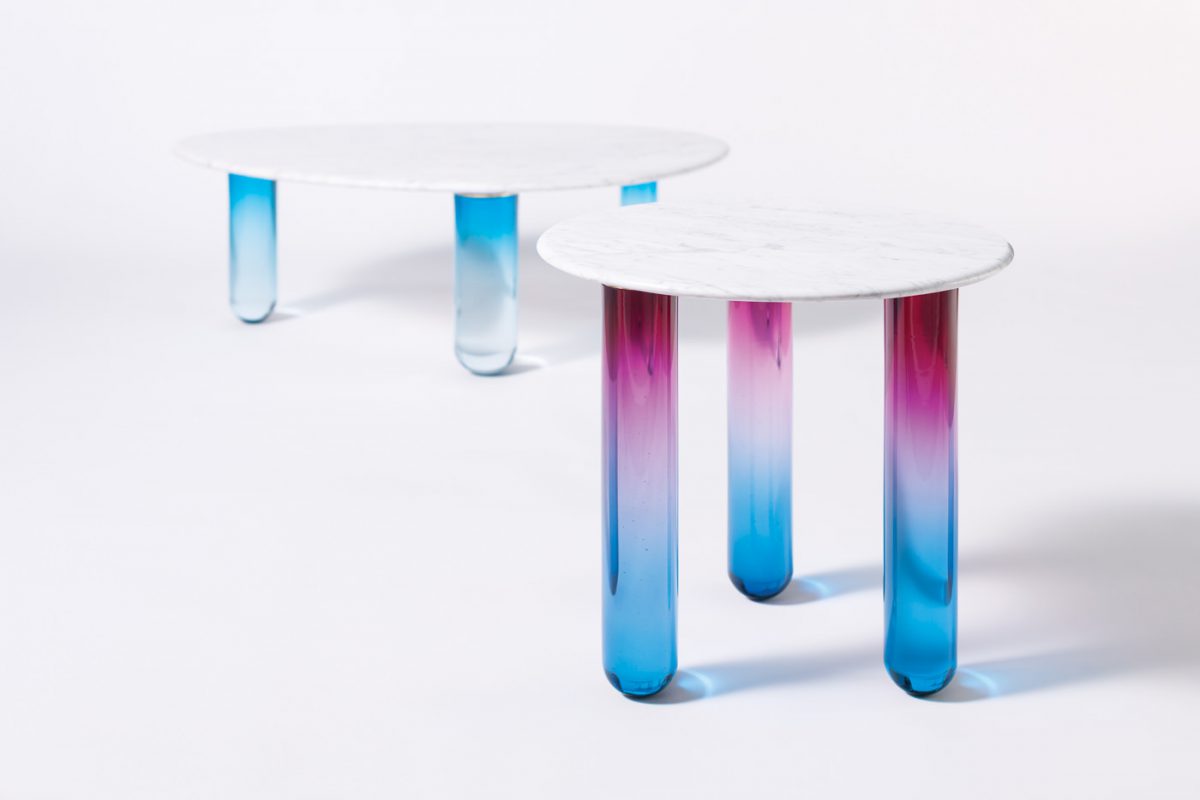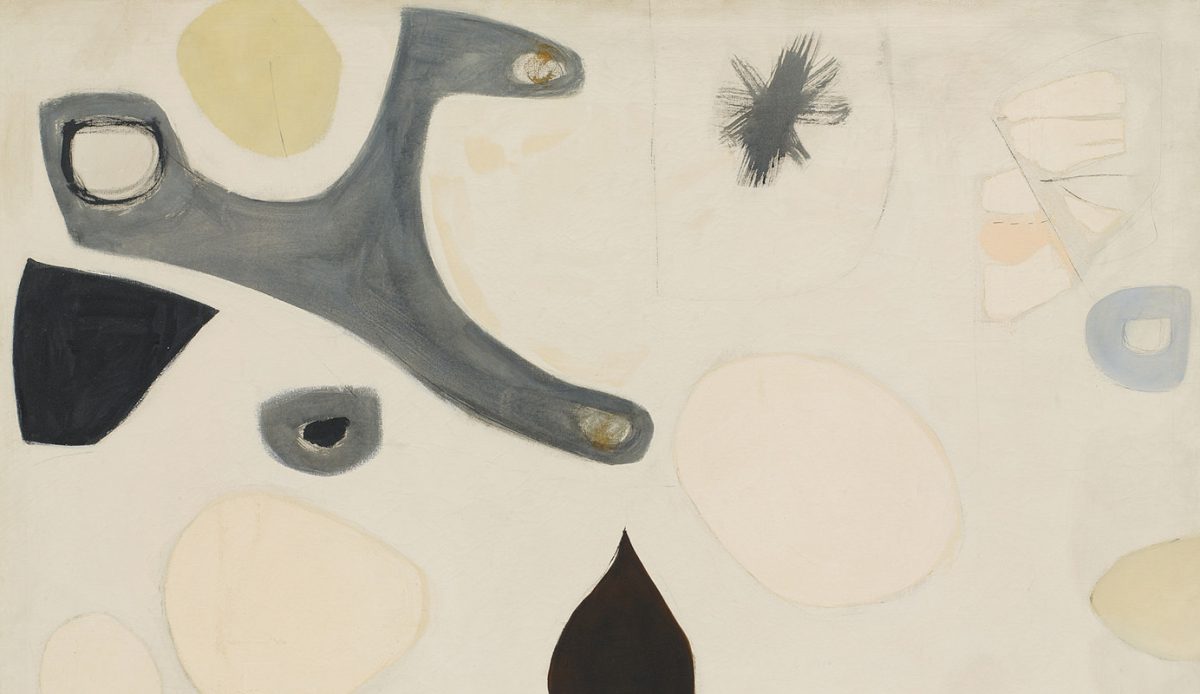The third iteration of the Hammer’s Made in LA biennial survey takes a revelatory look at what it means to be a working artist in this city at this time, while also considering what may have led up to this moment of revelation. Made in LA seeks to bring the work of emerging artists out of the anonymity of the studio and into public view. At the same time, it also takes a step back, bringing to the foreground the work of mid- to later-career artists who have spent much of their careers in the shadows, receiving limited recognition. Organized by Hammer curator Aram Moshayedi and Hamza Walker of the Renaissance Society in Chicago – adding a perspective of distance – this ambitious and far-reaching exhibit places the work of some of these less prominent artists in a new, high profile – a young, energetic, perhaps somewhat disparate context, but all the more exciting for the mix
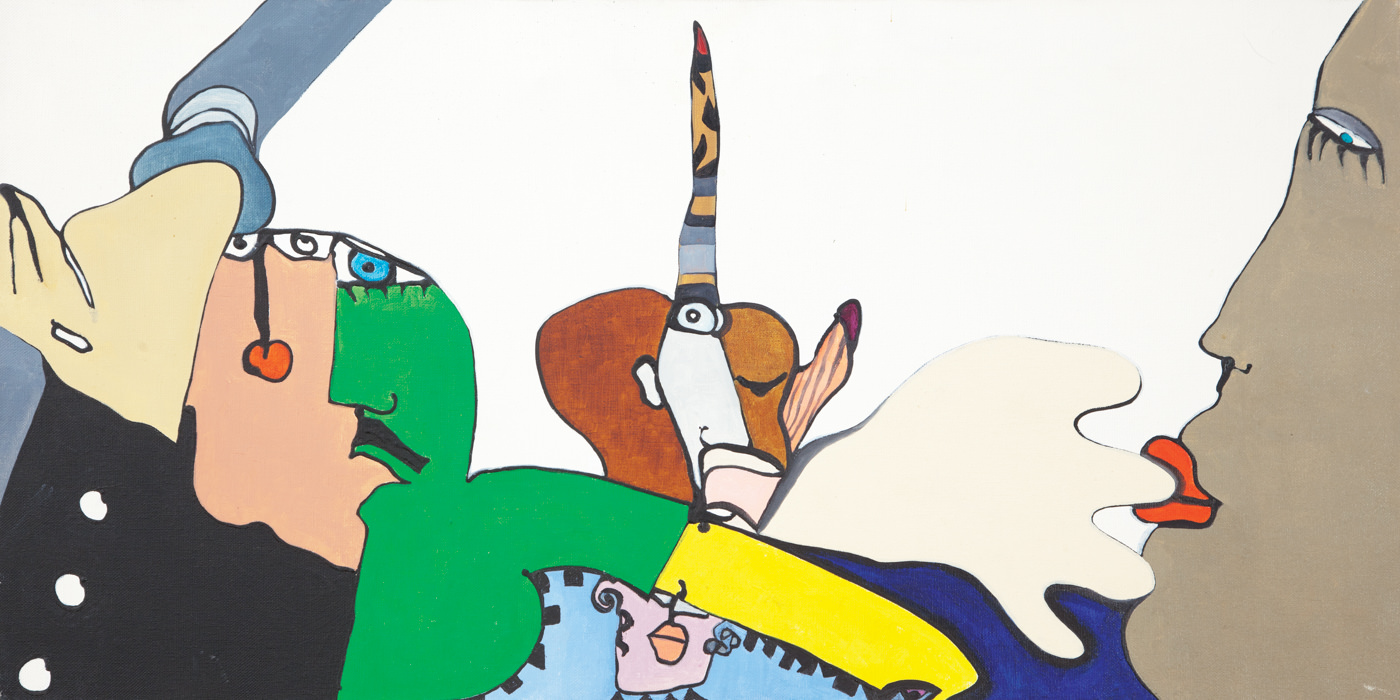
Huguette Caland. Enlève ton doigt, 1971. Oil on canvas. 15 x 30 in. (38.1 x 76.2 cm).
Courtesy of the artist and Gallery Janine Rubeiz, Beirut.
The exhibit includes the work of 26 artists immersed in a variety of disciplines extending beyond the typical museum fare of painting, sculpture, photography, video and assemblage. Also included are construction, fashion, performance art, music, dance and poetry, notably that of artist-poet Aram Saroyan whose poem, a, the, though, only provides the exhibit’s subtitle and an invisible understated theme. The range of ideas and media included in this survey even goes so far as to get literally down and dirty with Rafa Esparza’s adobe brick floor installation in an upstairs outdoor gallery, a work that will no doubt crumble during the course of the exhibit, leaving the telltale tracks of viewers’ footprints throughout the museum. Clearly, an inclusive, expansive net was cast in an effort to accommodate what Walker has referred to as “a raw spectrum of cultural expression.” If this seems a little overwhelming, in a way it is. The exhibit is vast in its reach and breadth. While thrilling, it may even be overly ambitious in scope, but the range of art and artistic visions is really the whole point.
Irrespective of the overall context, there are numerous gems in the offering and moments of awe-inspiring splendor. Among these is a mini-retrospective of the oeuvre of Lebanese artist Huguette Caland, who lived in LA from 1987 to 2013. Included here, distinct but still in the larger context of Made in LA, is a sampling of Caland’s work since the 1960s, inventive and deeply personal paintings, drawings, paper mâché sculptures and mannequins dressed in her whimsical painted caftans. These enticing works are infused with Caland’s elegant sense of line, delightful wit and unabashedly feminine erotic sensibility.
In an interesting counterpoint to Caland are the dynamic large-scale abstract paintings of Rebecca Morris, with concrete layers and cleanly defined shapes which explore positive and negative space in an innovative palette – a whole delicious gallery full. Then there’s a suite of welding tables inherited by Sterling Ruby with his Los Angeles studio space. The tables echo the Made in LA theme with a different historical twist, reflecting the era of material labor in LA and the mid-20th century tradition of welded constructed works of sculpture. A gallery dedicated to Kenzi Shiokava’s totem-like sculptures and inventive assemblage works reflect what it apparently means to have been born in Japan, raised in Brazil and attend art school in Los Angeles. (Shiokava is the long-time artist-in-residence at the Watts Towers Arts Center.)
 Mark Verabioff. Marxism and Art Beware of Fascist Broism, 2016. Design by TAR Studio, San Francisco.
Mark Verabioff. Marxism and Art Beware of Fascist Broism, 2016. Design by TAR Studio, San Francisco.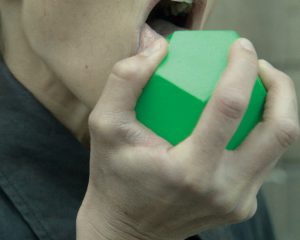 Hammer_Museum_Made_In _LA-SHAHRYAR NASHAT
Hammer_Museum_Made_In _LA-SHAHRYAR NASHAT Rafa Esparza. Building: A Simulacrum of Power, 2014. Performance on the site of Michael Parker’s The Unfinished (2014), the Bowtie Project, Los Angeles, August 24, 2014. Photograph by Dylan Schwartz. Courtesy of Clockshop.
Rafa Esparza. Building: A Simulacrum of Power, 2014. Performance on the site of Michael Parker’s The Unfinished (2014), the Bowtie Project, Los Angeles, August 24, 2014. Photograph by Dylan Schwartz. Courtesy of Clockshop.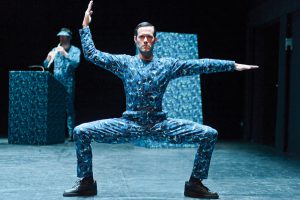 Adam Linder. Vexed Vista, 2015. Performance at Les Subsistances, Lyon, France, January 2015. Stage detail. Photograph by Shahryar Nashat.
Adam Linder. Vexed Vista, 2015. Performance at Les Subsistances, Lyon, France, January 2015. Stage detail. Photograph by Shahryar Nashat. Sterling Ruby. TABLE 3, 2015. Steel. 37 1⁄2 x 72 1⁄8 x 55 1⁄4 in. (95.3 x 183.2 x 140.3 cm). Courtesy of Sterling Ruby Studio and Gagosian Gallery. Photograph by Robert Wedemeyer.
Sterling Ruby. TABLE 3, 2015. Steel. 37 1⁄2 x 72 1⁄8 x 55 1⁄4 in. (95.3 x 183.2 x 140.3 cm). Courtesy of Sterling Ruby Studio and Gagosian Gallery. Photograph by Robert Wedemeyer. Shahryar Nashat. Still from Hustle in Hand, 2014 (detail). Digital video, color, sound. 9:40 min. Courtesy of Rodeo, London and Silberkuppe, Berlin.
Shahryar Nashat. Still from Hustle in Hand, 2014 (detail). Digital video, color, sound. 9:40 min. Courtesy of Rodeo, London and Silberkuppe, Berlin. If part of the point is to present a sampling of what it means to be an artist in the midst of the booming LA cultural scene at this moment in time, a, the, though, only does convey that. Bringing these artists into view – especially the more wondrous and obscure work – is an impressive achievement. In any case, viewers can weigh in on the merits themselves by voting for their favorite artist to win the $25,000 Public Recognition Award.
Made in LA goes a long way toward pursuing the idea of the museum as preserver of material culture. At the same time, museums may also influence culture. In some instances, the curators helped move the artists’ processes along, so that some of the exhibits were in effect partially commissioned. An enduring example of this is the intriguing bright yellow catalogue, a commemorative adjunct to the exhibit. Something of an art piece itself, the book was innovatively produced in collaboration with the participating artists, who were invited to contribute to the pages as extensions of their artistic practices.




